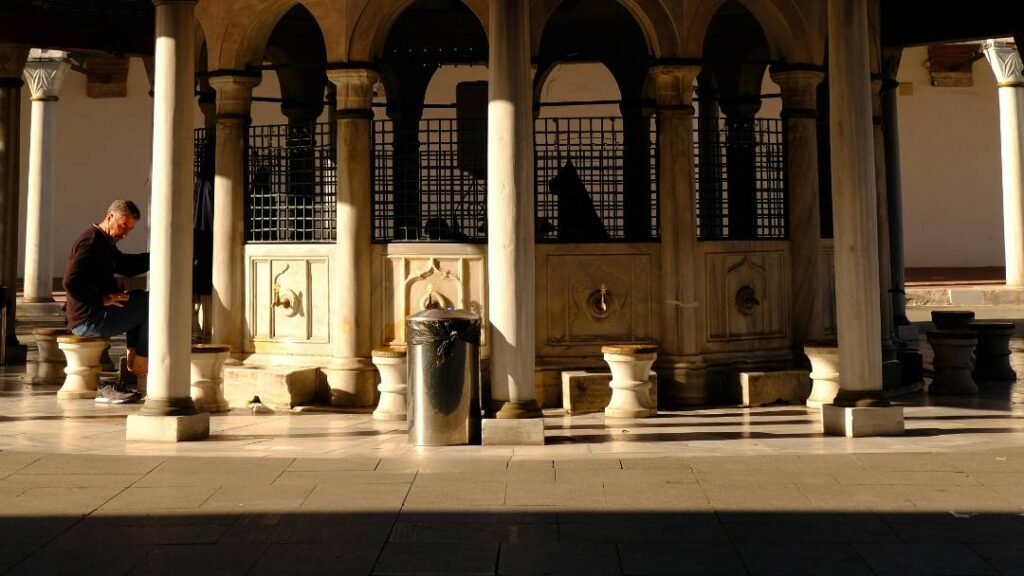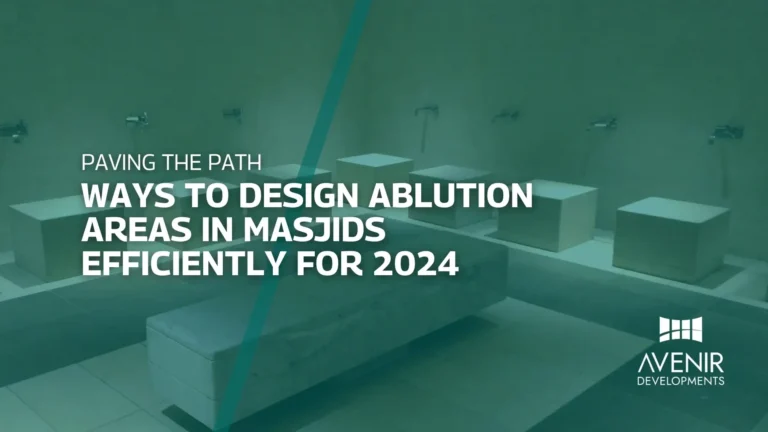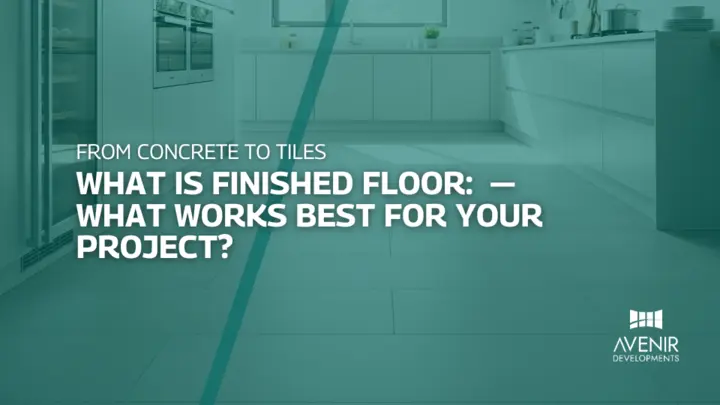As an experienced architect, interior designer, and custom home builder with over 20 years in the industry, I’ve had the privilege of designing and building numerous mosques. One of the most crucial aspects of mosque design is the ablution area. This area is where worshippers cleanse themselves before performing their prayers, making it a vital component of any mosque. In this article, we’ll explore efficient ways to design ablution areas in masjids.
I remember a particularly challenging project where we were tasked with designing a mosque in a densely populated urban area. Space was limited, but the client was adamant about providing a comfortable and functional ablution area. Through careful planning and innovative design, we were able to create a space that not only met the needs of the worshippers but also enhanced the overall aesthetic of the mosque.
In the following sections, we’ll discuss the importance of ablution areas, explore current trends and developments, and provide practical tips for designing efficient and inviting spaces.

Designing Mosque Ablution Areas
Key Principles for Hygienic, Functional & Serene Wudu Spaces
Hygiene First
- Prioritize non-slip flooring to prevent accidents.
- Install touchless sensor faucets to minimize germ spread.
- Ensure proper ventilation (natural & mechanical) to control humidity & odors.
- Use easy-to-clean, non-porous surfaces.
Durable & Smart Materials
- Opt for solid surfaces or engineered composites for Wudu stations.
- Use high-grade stainless steel for taps and fixtures.
- Choose antimicrobial tiles or mats for enhanced cleanliness.
- Select materials resistant to mold and mildew growth.
Water Conservation
- Implement low-flow fixtures and auto-stop taps.
- Explore greywater recycling systems for irrigation or toilet flushing.
- Educate users on mindful water usage through clear signage.
- Ensure efficient drainage to prevent water stagnation.
Accessibility for All
- Provide ramps and level access for mobility challenges.
- Designate accessible Wudu stations with appropriate heights.
- Install sturdy grab bars and handrails for support.
- Use clear, high-contrast, and tactile signage.
Thoughtful Layout & Flow
- Ensure adequate spacing between Wudu stations for comfort.
- Design clear circulation paths for smooth user movement.
- Plan for easy cleaning and maintenance access.
- Integrate discreet and hygienic waste disposal units.
The Importance of Ablution Areas in Mosques
Ablution areas are essential for maintaining the purity and sanctity of mosques. They serve as a place for worshippers to cleanse themselves before engaging in prayer. A well-designed ablution area can significantly enhance the overall experience of visiting a mosque.
Historical Context and Evolution
The practice of ablution, or wudu, has been a fundamental part of Islamic worship for centuries. The specific rituals and requirements may vary slightly across different schools of Islamic thought, but the core principles remain consistent. Historically, ablution areas in mosques were often simple and functional, designed to meet the basic needs of worshippers.
Over time, as mosques became more elaborate and ornate, ablution areas also evolved to reflect the architectural styles and cultural influences of their respective regions. From the grand, marble-clad ablution halls of ancient mosques to the more contemporary and minimalist designs found in modern structures, ablution areas have adapted to meet the changing needs and preferences of worshippers.
Key Considerations for Ablution Area Design
When designing an ablution area, several key factors must be taken into account:
- Accessibility: The area should be easily accessible to people of all ages and abilities. This includes providing ramps, handrails, and adequate space for wheelchairs.
- Privacy: Worshippers should have a sense of privacy while performing their ablutions. This can be achieved through the use of partitions, individual cubicles, or well-planned layout.
- Hygiene: The ablution area must be clean and sanitary. This requires proper drainage, ventilation, and regular maintenance.
- Comfort: The area should be comfortable and inviting, with adequate lighting, temperature control, and seating.
- Functionality: The design should be practical and efficient, with easy access to water, soap, and other necessary amenities.
By carefully considering these factors, architects and designers can create ablution areas that not only meet the functional requirements but also enhance the spiritual experience of worshippers.
Current Trends and Developments in Ablution Area Design
Ablution area design has evolved significantly in recent years, reflecting changing trends in mosque architecture and the needs of contemporary worshippers. Here are some of the latest developments:
1. Sustainable Design
- Water conservation: Incorporating water-saving features such as low-flow faucets, rainwater harvesting systems, and efficient drainage can help reduce the environmental impact of ablution areas.
- Energy efficiency: Using energy-efficient lighting and ventilation systems can contribute to a more sustainable mosque.
2. Accessibility and Inclusivity
- Universal design: Designing ablution areas to accommodate people with disabilities is becoming increasingly important. Features such as accessible toilets, grab bars, and ramps can ensure that everyone can participate in worship.
3. Enhanced Comfort and Functionality
- Modern amenities: Incorporating modern amenities such as heated floors, air conditioning, and ample storage space can enhance the comfort and convenience of worshippers.
- Smart technology: Using smart technology, such as automated faucets and sensors, can improve the efficiency and cleanliness of ablution areas.
4. Architectural Innovation
- Innovative materials: Exploring new materials and construction techniques can result in unique and visually appealing ablution areas.
- Integration with the surrounding environment: Designing ablution areas that seamlessly blend with the mosque’s overall architecture and the surrounding landscape can create a harmonious and immersive experience.
5. Government Initiatives and Regulations
- Building codes and standards: Many governments have implemented building codes and standards that address the design and construction of mosques, including ablution areas. These regulations often focus on safety, accessibility, and sustainability.
- Government funding: In some countries, governments may provide funding or incentives to support the construction or renovation of mosques, including ablution areas.
6. Community Involvement
- Consultation and feedback: Involving the local community in the design process can help ensure that the ablution area meets their needs and preferences.
- Community-funded projects: Some mosques are funded and built through community donations, reflecting the importance of ablution areas in local religious life.
Common FAQs about Ablution Area Design
Here are some frequently asked questions about ablution area design:
Q: What is the minimum size requirement for an ablution area in a mosque?
A: The minimum size requirement for an ablution area can vary depending on local building codes and regulations. However, it is generally recommended to provide sufficient space to accommodate the expected number of worshippers. A good rule of thumb is to allow for at least 1 square foot of space per person.
Q: What are some essential features that should be included in an ablution area?
A: Essential features of an ablution area include:
Water supply: Adequate water supply, including faucets for washing hands and feet.
Drainage: Proper drainage to prevent water from pooling or overflowing.
Soap dispensers: Soap dispensers for hand washing.
Mirrors: Mirrors for checking cleanliness.
Drying facilities: Paper towels or hand dryers for drying hands.
Seating: Seating for worshippers who may need to rest or wait.
Waste bins: Waste bins for disposing of used paper towels and other waste.
Q: How can I ensure that the ablution area is accessible to people with disabilities?
A: To ensure accessibility, consider the following:
Ramps: Provide ramps for wheelchair access.
Grab bars: Install grab bars near toilets and sinks.
Accessible toilets: Provide accessible toilets with wider stalls and lower sinks.
Clear pathways: Ensure clear pathways for wheelchair users.
Emergency call buttons: Install emergency call buttons in case of accidents.
Q: What are some tips for maintaining a clean and hygienic ablution area?
A: To maintain a clean and hygienic ablution area:
Regular cleaning: Clean the area regularly, including floors, walls, and fixtures.
Disinfect surfaces: Disinfect surfaces to prevent the spread of germs.
Proper ventilation: Ensure proper ventilation to prevent mold and mildew.
Maintenance of plumbing: Regularly inspect and maintain plumbing to prevent leaks and clogs.
Educate worshippers: Educate worshippers about proper hygiene practices.
Q: How can I create a visually appealing and inviting ablution area?
A: To create a visually appealing ablution area:
Use of color: Use calming and soothing colors that can help create a relaxing atmosphere.
Natural light: Incorporate natural light whenever possible.
Decorative elements: Add decorative elements such as tile patterns, mosaics, or artwork.
Plants and greenery: Incorporate plants and greenery to create a more welcoming and natural environment.
Expert Tips for Designing Ablution Areas
Based on my years of experience in architecture, interior design, and custom home building, here are some expert tips for designing efficient and inviting ablution areas in mosques:
1. Prioritize Functionality
- Clear pathways: Ensure clear pathways between the ablution area and the prayer hall to avoid congestion.
- Adequate space: Provide ample space for worshippers to perform their ablutions without feeling cramped.
- Efficient layout: Design the layout to minimize the distance that worshippers need to travel between different components of the ablution area.
2. Consider the Climate
- Ventilation: Ensure proper ventilation to prevent moisture buildup and unpleasant odors.
- Temperature control: Provide adequate heating or cooling to maintain a comfortable temperature for worshippers.
- Natural light: Maximize natural light to create a bright and welcoming atmosphere, but also provide sufficient artificial lighting for nighttime use.
3. Incorporate Sustainable Features
- Water conservation: Use water-saving fixtures such as low-flow faucets and urinals.
- Renewable energy: Consider using renewable energy sources such as solar power to reduce the mosque’s environmental impact.
- Recycled materials: Use recycled materials whenever possible to promote sustainability.
4. Pay Attention to Detail
- Quality materials: Use high-quality materials that are durable and easy to maintain.
- Non-slip surfaces: Choose non-slip flooring to prevent accidents.
- Ergonomic design: Design the ablution area to be ergonomic and comfortable for worshippers of all ages and abilities.
5. Create a Sense of Tranquility
- Peaceful atmosphere: Use calming colors and soothing sounds to create a peaceful and relaxing atmosphere.
- Natural elements: Incorporate natural elements such as plants or water features to enhance the sense of tranquility.
- Spiritual symbolism: Consider incorporating spiritual symbolism into the design, such as Islamic calligraphy or geometric patterns.
6. Seek Professional Guidance
- Consult with experts: Consult with architects, interior designers, and construction professionals who have experience in designing mosques.
- Consider local regulations: Ensure that the design complies with local building codes and regulations.
Designing efficient and inviting ablution areas in mosques is crucial for providing a positive and fulfilling experience for worshippers. By carefully considering factors such as functionality, sustainability, accessibility, and aesthetics, architects and designers can create spaces that enhance the spiritual and communal aspects of mosque worship.
Key Takeaways
- Prioritize functionality: Ensure that the ablution area is well-designed, accessible, and easy to use.
- Incorporate sustainable features: Reduce the environmental impact of the ablution area by incorporating sustainable design elements.
- Consider accessibility: Design the ablution area to accommodate people with disabilities.
- Create a welcoming atmosphere: Use color, lighting, and other design elements to create a peaceful and inviting environment.
- Seek professional guidance: Consult with experts who have experience in designing mosques.
If you are planning to build or renovate a mosque and need assistance with designing the ablution area, please contact Avenir Developments. Our team of experienced architects and interior designers can help you create a space that is both functional and beautiful.
- Phone: +923001101103
- WhatsApp: +923001101103
- Website: https://avenirdevelopments.com/
By working with Avenir Developments, you can ensure that your mosque’s ablution area is a place where worshippers can feel comfortable, clean, and spiritually uplifted.







